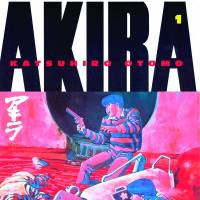"Kanedaaaa!" "Tetsuoooo!" For a generation of teenagers growing up in the 1990s (this writer included), Katsuhiro Otomo's "Akira" was our gateway drug to the imaginative excesses of Japanese pop culture. With its immaculately rendered visions of high-tech chaos, psychokinetic battles, revolutionary sects and unfeasibly cool motorbikes, it was like catnip for undernourished adolescent minds.
Akira, by Katsuhiro Otomo.
Kodansha Comics, Manga.
The manga world had never seen anything quite like it either. While many of his peers were still in thrall to the work of pioneering artist Osamu Tezuka, Otomo drew on Western influences — notably French cartoonist Moebius — to create a radically different aesthetic, with realistically rendered characters and intensely detailed backgrounds. As fellow artist Taiyo Matsumoto ("Tekkon Kinkreet") once observed, you can divide the history of Japanese comics into pre-Otomo and post-Otomo eras. After "Akira" (and its influential forerunner, "Domu"), there was no going back.
Originally serialized in "Weekly Young Magazine" between 1982 and 1990, Otomo's cyberpunk epic eventually stretched to more than 2,000 pages, which were later compiled into six volumes. During that time, he would also helm the landmark 1988 anime version of "Akira," drawing on a lavish budget to create a superbly realized work of animation that few have since managed to surpass — its creator included.
But if you've only seen the film, the manga is nigh on essential: bigger, bolder and — as unlikely as this may seem — even barmier.
Each week "Essentials" introduces a work of fiction that should be on the bookshelf of any Japanophile.



















With your current subscription plan you can comment on stories. However, before writing your first comment, please create a display name in the Profile section of your subscriber account page.